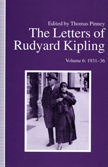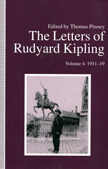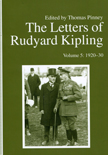The Letters of Rudyard Kipling, Volume 6: 1931-36
Praise for the Previous Volumes
“The letters confirm Kipling's brilliance as an observer and chronicler of his time. His lucid style makes reading a joy.”—Choice
“Pinney's exemplary editing, his prodigious learning, never flaunted, embraces every source. His selection is judicious.”—London Review of Books
“Thomas Pinney's editing is informative, concise, always relevant.”—Financial Times
“These evocative, detailed, and entertaining letters are full of Kipling's marvelous descriptive power that vividly captures the era in which he lived. These letters will be of extreme interest to all those fascinated by Kipling's development as both a writer and a cultural critic.”—New York Review of Books
“. . . the whole correspondence is as compulsive to read through . . . as any of [Kipling's] stories.”—Times Literary Supplement
“Kipling is well served by his editor, Thomas Pinney. Pinney is discreet, methodical and judicious. His notes are brief and to the point, his selection of letters is wide-ranging and presented to form a coherent narrative.”—Times Literary Supplement
The most popular author of his day and a paradox who was both an assertive British imperialist and a man of sensitivity and wide reading, Rudyard Kipling is best remembered now as the author of The Jungle Book, the Just-So Stories, and Kim. He won the Nobel Prize for Literature in 1907—the first Englishman to receive this prize. Fully annotated, volume 6 concludes the publication of Kipling’s letters, a heroic effort that began with the publication of volume 1 in 1990.
The sixth and last volume focuses on Kipling’s final years. Despite his increased suffering, he traveled a great deal (Egypt, France, Marienbad, and Monte Carlo, plus a tour of the Midlands in his new Rolls Royce), published three books (Limits and Renewals, Souvenirs of France, and Collected Dog Stories), and was made an honorary fellow of Magdalene College and a member of the Institut de France. Aware of his approaching end, he worked at two great retrospective efforts: the splendid Sussex Edition and the autobiographical Something of Myself; both were published posthumously. On January 18, 1936, he died in Middlesex Hospital; his ashes are buried in the Poet’s Corner, Westminster Abbey.
This volume contains a chronology of Kipling's life from 1931-36; volume 6 also includes errata for the first four volumes and a comprehensive index to all six volumes of this distinguished collection.





